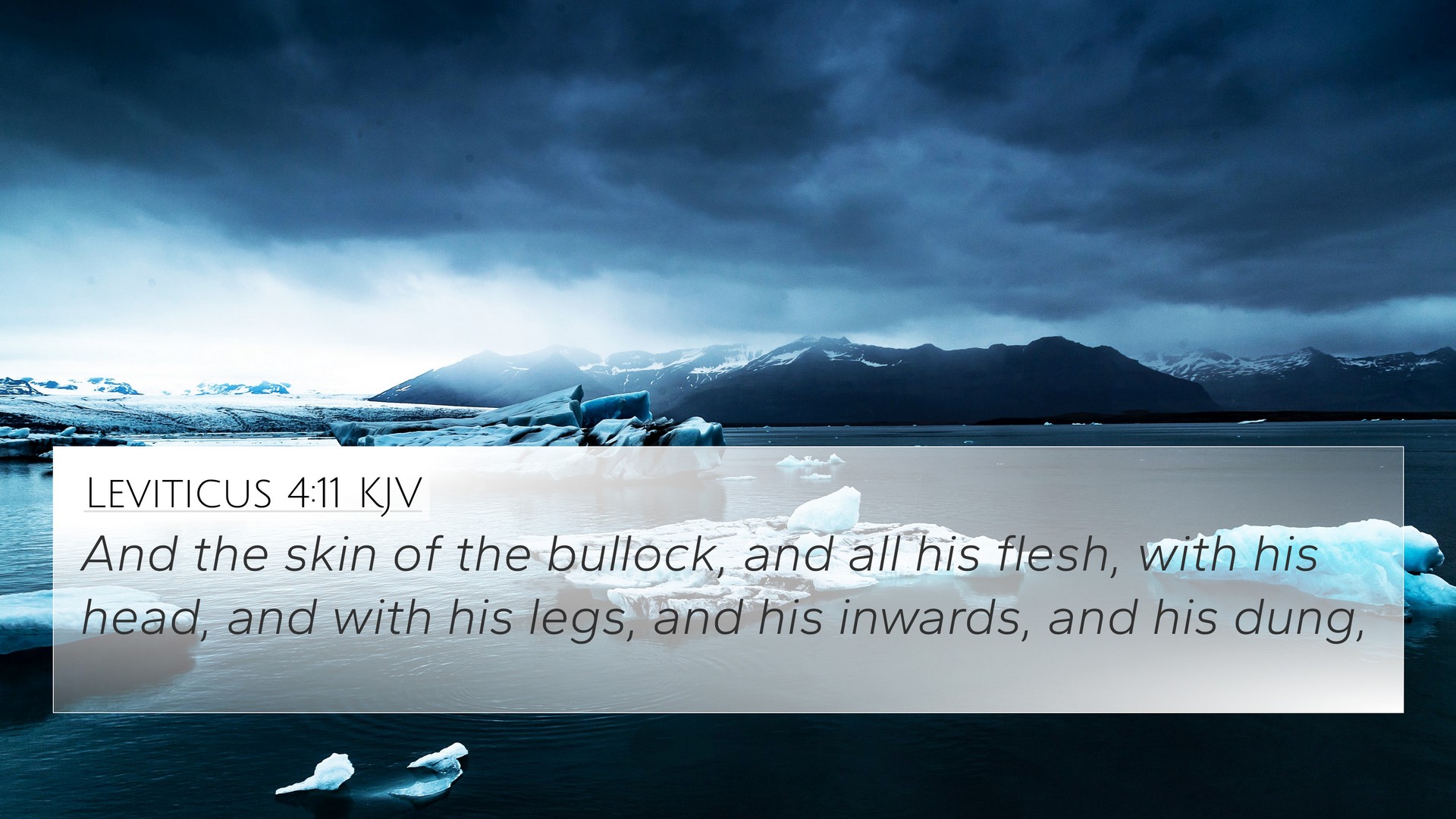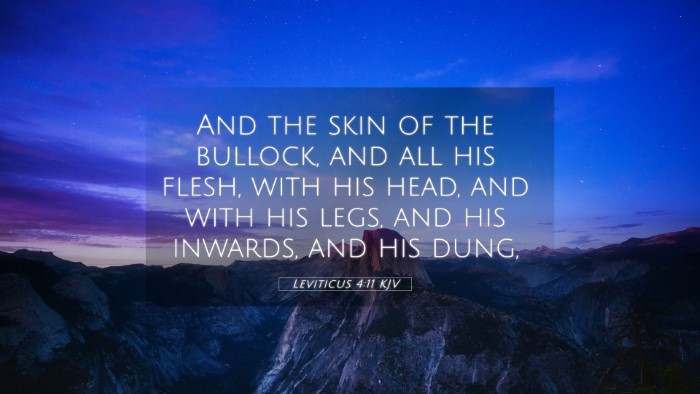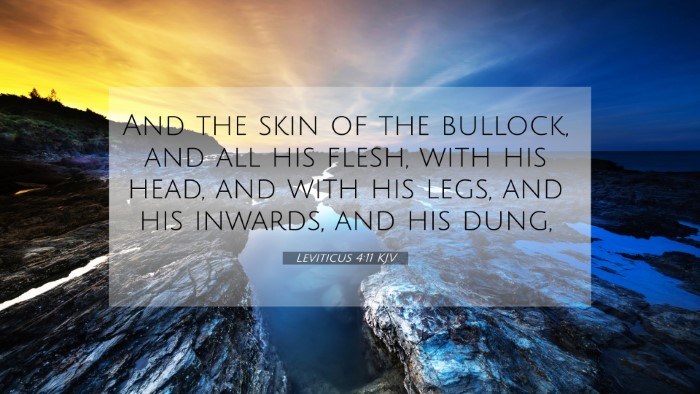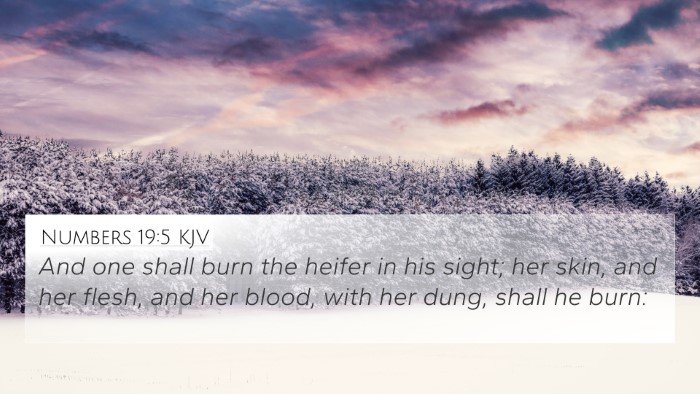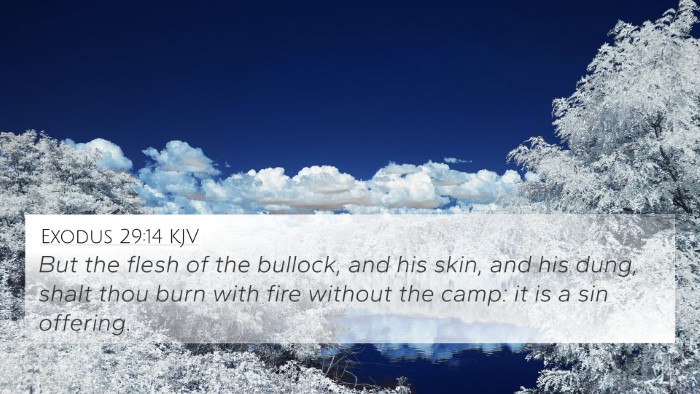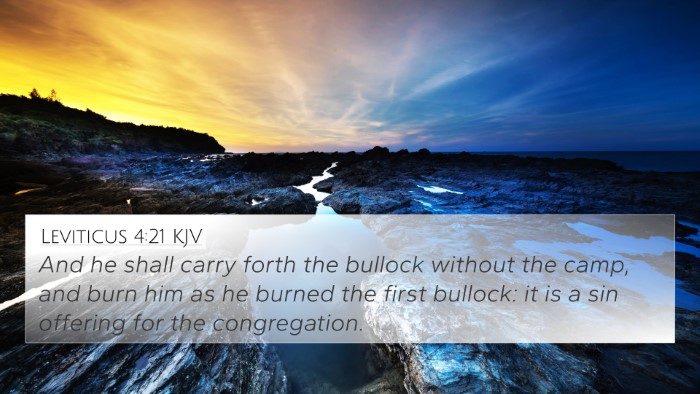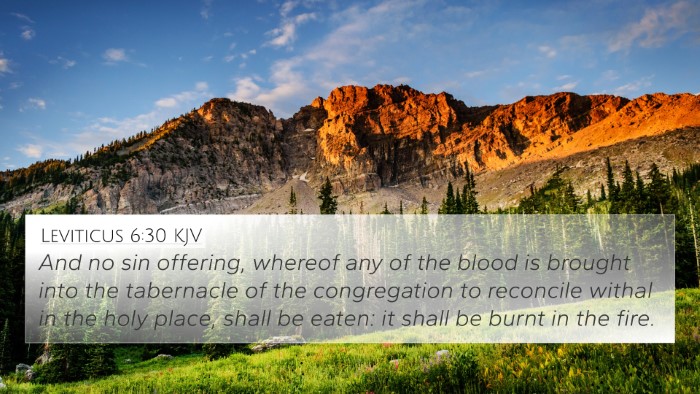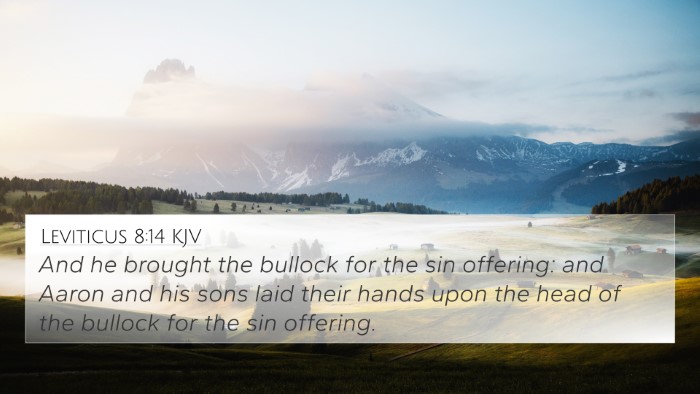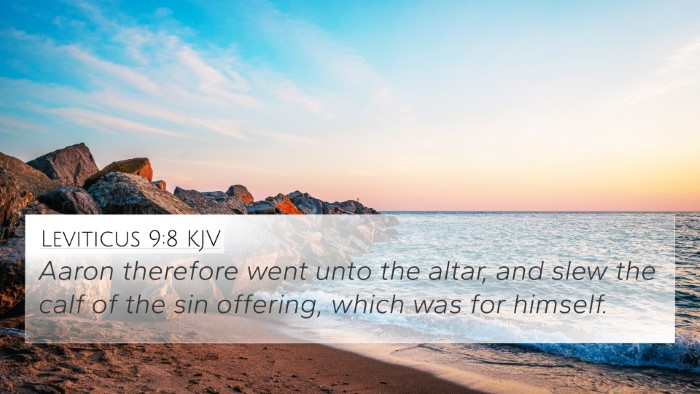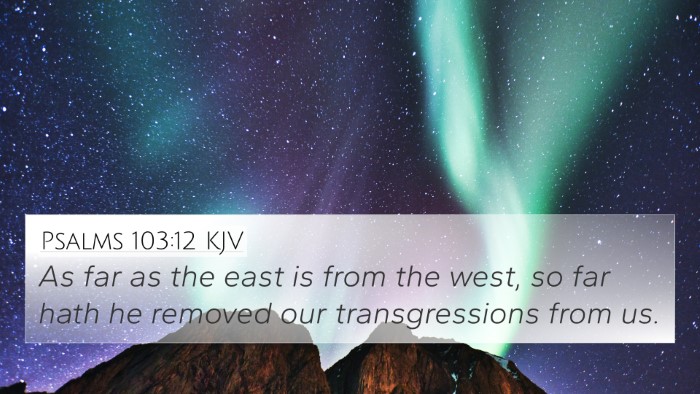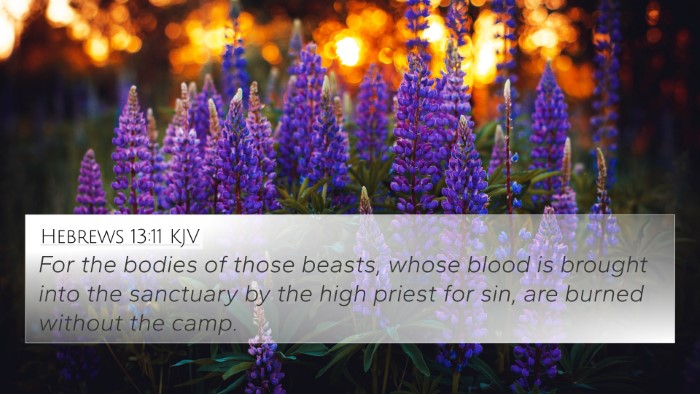Understanding Leviticus 4:11
Leviticus 4:11 states: "But the skin of the bull, and all its flesh, with its head and its legs, and its entrails and its dung," which touches on the specifics of sacrificial requirements outlined in the Mosaic Law.
Overview of the Verse
This verse discusses the proper handling of a bull sacrifice offered for unintentional sin. The details provided underscore the meticulous nature of God’s law concerning offerings.
Commentary Insights
- Matthew Henry: Henry emphasizes the need for purity and the separation of the unclean from the sacrificial processes. The skin and dung being discarded symbolize the removal of sin.
- Albert Barnes: Barnes highlights the importance of understanding the full scope of the sacrifice; the rejection of specific parts symbolizes the comprehensive nature of atonement that extends to our hearts and lives.
- Adam Clarke: Clarke details how this practice demonstrated the holiness of God and the seriousness of sin. The disposal of the skin indicates that only pure offerings can be accepted.
Thematic Connections
This verse serves as a foundation for understanding the sacrificial system in the Old Testament and its fulfillment in the New Testament through Jesus Christ. It illustrates themes of sin, sacrifice, and redemption, tying together various scriptural narratives.
Bible Cross-References
- Hebrews 10:4: This passage speaks about the insufficiency of animal sacrifices compared to Christ's ultimate sacrifice.
- Isaiah 1:11: Discusses the Lord's discontent with sacrifices lacking true righteousness.
- Leviticus 7:8: Further elaborates on the handling of offerings and the roles assigned to priests.
- Hebrews 9:22: States that "without shedding of blood is no remission," emphasizing the necessity of sacrifice for atonement.
- 1 Peter 1:18-19: Highlights the preciousness of Christ’s blood as a new offering, comparing it to the old ones.
- Exodus 29:14: Discusses the disposal of the sin offering and the requirement of purity.
- Romans 12:1: Urges believers to present themselves as living sacrifices, indicating the ultimate fulfillment of sacrificial laws.
Comparative Bible Verse Analysis
To understand Leviticus 4:11 fully, it is beneficial to analyze it in conjunction with other Scriptures that discuss the sacrificial system:
- Leviticus 16: The Day of Atonement provides context for understanding the broader implications of sacrifice for the entire community of Israel.
- John 1:29: John the Baptist identifies Jesus as "the Lamb of God," linking the sacrificial system to the New Covenant.
Connecting Old and New Testaments
The connections between Old and New Testament themes of sacrifice and atonement are paramount for understanding Christian theology:
- The Old Testament sacrificial system points to the ultimate sacrifice of Jesus, fulfilling the need for atonement once and for all.
- Cross-referencing these verses reveals a consistent theme of God’s holiness and humanity’s need for redemption through sacrifice.
Tools for Bible Cross-Referencing
For those studying the Scriptures, utilizing tools for Bible cross-referencing can greatly enhance understanding. Consider using a Bible Concordance or a Bible Cross-Reference Guide to discover connections:
- Bible Concordances: Help in identifying themes and words to find corresponding verses.
- Bible Cross-Reference Guides: These provide lists of related verses based on themes and concepts.
- Cross-Reference Bible Study: Encourage deeper exploration of scriptural themes and connections.
In Summary
Leviticus 4:11 serves not merely as an isolated command but as a vital piece illuminating the sacrificial system foundational to understanding sin and redemption throughout Scripture. By cross-referencing and engaging with these verses, believers gain insight into the overarching narrative of God’s plan for atonement through Christ.
